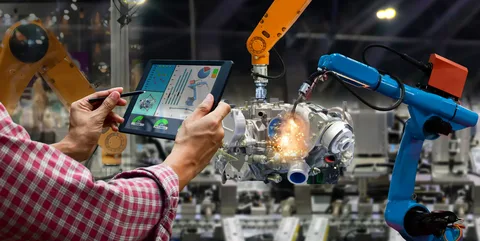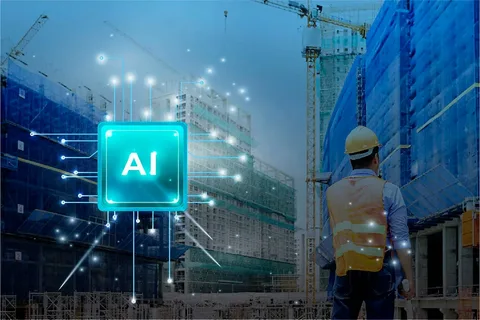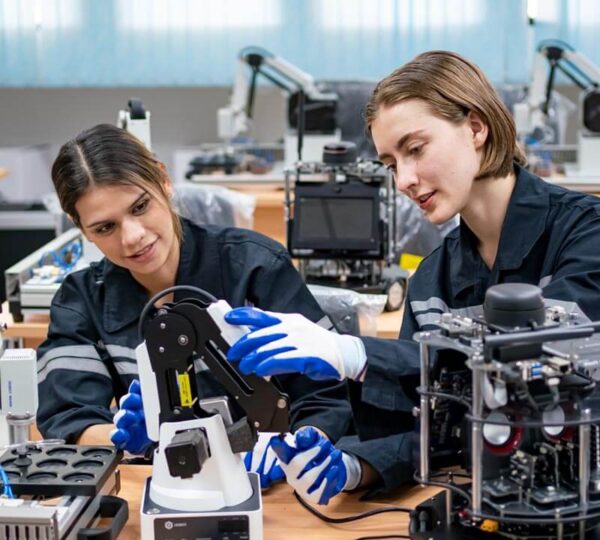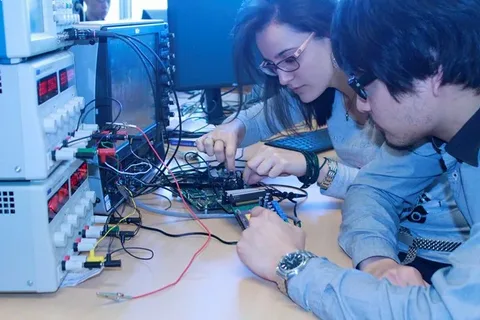Introduction
Artificial Intelligence AI has evolved from a futuristic concept into a practical tool transforming nearly every industry. Among its most profound impacts is in the field of engineering, where complex problems, vast datasets, and precision requirements intersect. Engineers have always relied on tools to amplify their problem solving abilities from calculators and CAD software to simulation platforms. AI is the next leap in this progression.
By mimicking human intelligence through machine learning, deep learning, natural language processing, and computer vision, AI enables engineers to design more efficiently, predict outcomes with higher accuracy, and reduce risks in real world systems. The result is not merely incremental efficiency but a paradigm shift in how infrastructure, machines, devices, and processes are conceptualized and managed.
This article explores the applications of artificial intelligence across major engineering disciplines civil, mechanical, electrical, chemical, biomedical, and aerospace while also discussing the ethical, practical, and future dimensions of this technological revolution.

Core AI Techniques Relevant to Engineering
Before diving into specific domains, it is critical to understand the AI methods that form the backbone of engineering applications:
Machine Learning and Deep Learning
- Machine Learning ML: Enables engineers to extract insights from large datasets, build predictive models, and automate optimization tasks.
- Deep Learning DL: A subset of ML that uses multi layered neural networks for image recognition, natural language understanding, and complex pattern detection.
Computer Vision
Essential in quality inspection, defect detection, and monitoring, computer vision allows machines to interpret images and video streams, transforming areas like construction site surveillance or electronic circuit validation.
Natural Language Processing NLP
NLP is increasingly used to automate documentation, requirements analysis, and knowledge extraction from technical texts, patents, and research papers.
Reinforcement Learning
Applied in control systems and robotics, reinforcement learning helps machines optimize decision making in uncertain, dynamic environments such as autonomous vehicles or chemical process management.
AI in Civil and Structural Engineering
Civil engineering is a field that involves large scale infrastructure, risk management, and safety all of which benefit from AI predictive and analytical capabilities.
Smart Infrastructure Monitoring
- AI algorithms analyze sensor data from bridges, tunnels, and skyscrapers to detect early signs of stress, cracks, or wear.
- Predictive models enable engineers to schedule maintenance before catastrophic failures occur.
Earthquake and Disaster Prediction
- AI integrates geological, seismic, and environmental data to improve earthquake forecasting.
- Neural networks help simulate disaster impact on urban layouts, aiding in resilient city planning.
Traffic Management and Urban Planning
- AI driven traffic optimization reduces congestion and emissions.
- Smart city systems employ AI for public transport scheduling, signal optimization, and infrastructure utilization analysis.
Materials Science and Construction Optimization
- Machine learning models predict material strength and durability, enabling cost efficient construction.
- AI also supports 3D printing of concrete structures, an emerging field in sustainable construction.
AI in Mechanical and Industrial Engineering
Mechanical and industrial engineering involve machinery, production systems, and industrial workflows where efficiency and precision are paramount.
Robotics and Automation
- AI driven robots are widely used for assembly lines, welding, and precision machining.
- Collaborative robots cobots use AI to work alongside humans safely and productively.
Predictive Maintenance
- AI analyzes IoT sensor data from machines to detect anomalies.
- This predictive approach prevents unplanned downtime and extends equipment life cycles.
Digital Twins in Manufacturing
- AI creates virtual replicas of machines or processes, known as digital twins.
- Engineers can simulate performance, test modifications, and forecast maintenance needs without disrupting actual production.
Quality Control with AI Inspection
- Computer vision systems detect surface defects, dimensional deviations, and assembly flaws.
- This reduces reliance on manual inspections, lowering costs and improving reliability.
AI in Electrical and Electronics Engineering
The rise of smart devices and complex circuits requires intelligent design, monitoring, and fault detection systems.
Circuit Design and Testing
- AI tools automate PCB layout, minimize energy consumption, and test performance across multiple conditions.
- Optimization algorithms reduce design errors and accelerate prototyping.
Smart Grid Optimization
AI manages energy demand forecasting, load balancing, and renewable integration into power grids.
This ensures energy reliability while supporting sustainability goals.
Fault Detection in Electronics
- Machine learning identifies fault signatures in microchips or communication networks.
- Faster detection reduces costly recalls and enhances reliability.
Signal Processing Advancements
- AI improves signal clarity in communications systems, enabling 5G and beyond.
- Adaptive algorithms optimize radar, sonar, and medical imaging technologies.
AI in Chemical and Process Engineering
Chemical engineering involves complex processes where even small optimizations can lead to huge savings.
Process Optimization
- AI models enhance chemical plant efficiency by regulating temperature, pressure, and flow rates in real time.
- Reinforcement learning algorithms adjust operations for maximum yield with minimum energy.
Energy Efficiency
- AI identifies energy intensive steps and suggests process redesigns.
- Predictive models optimize fuel usage and minimize carbon emissions.
Molecular Simulation and Drug Discovery
- Deep learning accelerates the discovery of new materials, catalysts, and drugs.
- AI simulates molecular interactions far faster than traditional physics based models.
Hazard Detection and Risk Management
- AI monitors gas leaks, fire hazards, and toxic emissions.
- Real time alerts improve worker safety and environmental compliance.
AI in Biomedical and Healthcare Engineering
Biomedical engineering combines medicine and engineering, an area where AI shows transformative potential.
AI Powered Imaging and Diagnostics
- Deep learning algorithms outperform humans in detecting anomalies in MRI, CT scans, and X rays.
- AI reduces diagnostic errors and accelerates patient care.
Prosthetics and Assistive Devices
- AI enables the development of bionic limbs that adapt to user movements.
- Brain machine interfaces powered by AI allow paralyzed individuals to control devices with thought.
Personalized Medicine
- AI analyzes genetic and clinical data to tailor drug therapies to individuals.
- Bioengineering leverages AI to design custom implants and treatment plans.
Hospital Infrastructure Engineering
- AI optimizes hospital workflows, energy use, and emergency planning.
- Intelligent systems improve patient triage and resource allocation.
AI in Aerospace and Automotive Engineering
The aerospace and automotive sectors demand safety, efficiency, and innovation all of which benefit from AI.
AI in Aircraft Design and Safety
- AI supports aerodynamic simulations, reducing design cycles.
- Intelligent monitoring predicts failures in engines, avionics, and structural components.
Autonomous Vehicles
- Self driving cars rely on AI for computer vision, path planning, and real time decision-making.
- AI also enhances driver assistance systems in conventional vehicles.
Space Missions
- AI supports trajectory planning, robotic navigation, and spacecraft health monitoring.
- NASA and SpaceX deploy AI for autonomous docking and mission analysis.
Fuel Efficiency and Emission Reduction
- AI algorithms improve aerodynamics, fuel mixtures, and propulsion systems.
- Automotive companies use AI to meet stringent emission standards.
Challenges, Ethics, and Future Directions
Data Quality and Availability
Engineering AI systems rely on massive, high quality datasets. Incomplete or biased data can undermine reliability.
Bias and Accountability
- Engineers must ensure AI recommendations do not introduce hidden biases.
- Accountability frameworks are required, especially in safety critical applications like aviation or healthcare.
Regulation and Standards
Global organizations are moving toward AI safety standards, but regulation remains fragmented.
-
Ethical AI practices must be embedded into engineering workflows.
What is AI in engineering?
AI in engineering uses algorithms to optimize design, predict failures, and automate processes.
How does AI help in civil engineering?
It monitors structures, predicts disasters, and improves smart city planning.
What role does AI play in mechanical engineering?
AI powers robotics, predictive maintenance, and digital twin simulations.
How is AI used in electrical engineering?
It improves smart grids, fault detection, and circuit design efficiency.
Can AI improve chemical engineering?
Yes, AI optimizes processes, saves energy, and accelerates molecular discovery.
How does AI impact biomedical engineering?
AI aids in diagnostics, prosthetics, and personalized treatment plans.
What is AI role in aerospace engineering?
AI supports aircraft safety, autonomous systems, and space exploration.
Does AI make engineering safer?
Yes, through predictive maintenance, hazard detection, and real time monitoring.
What challenges does AI face in engineering?
Data quality, bias, ethics, and regulation are key challenges.
Will AI replace engineers?
No, it complements engineers by automating tasks while humans lead decisions.
Conclusion
Artificial Intelligence has become a transformational partner for engineers across disciplines. From optimizing construction safety and manufacturing processes to advancing aerospace missions and biomedical innovations, AI amplifies human creativity and precision.
The road ahead requires careful navigation of ethical, regulatory, and technical challenges. But one thing is certain: AI is not just assisting engineers it is redefining what engineering means in the 21st century.



